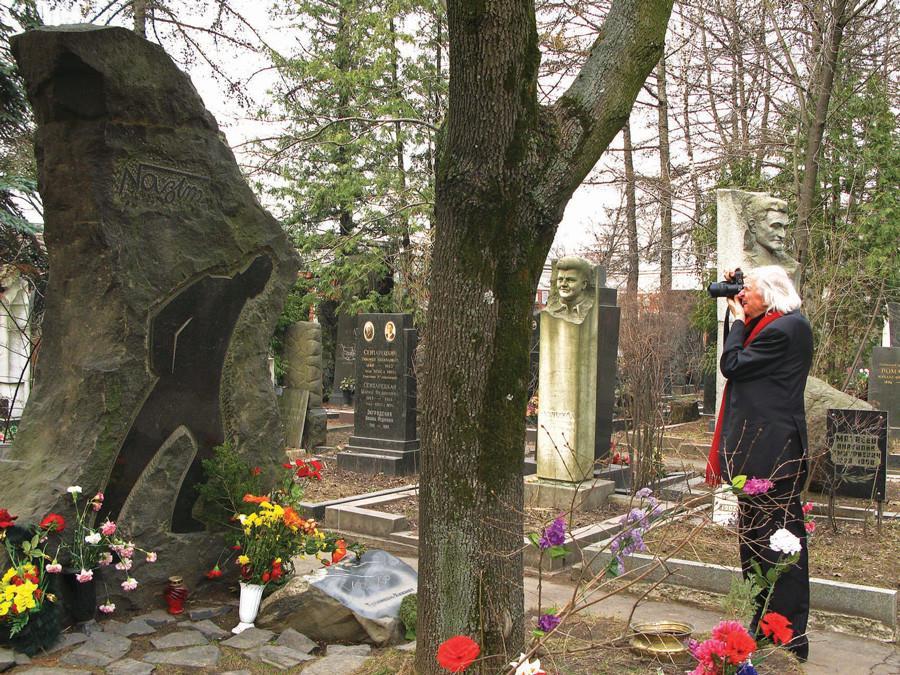Legendary photographer Gökşin Sipahioğlu commemorated in exhibitions
ÖZGEN ACAR

The photos of the late photojournalist Gökşin Sipahioğlu are being displayed at the Basia Embiricos and Photo 12 galleries in Paris, owned by French politician Giscard d’Estaing’s daughter.
The exhibitions, opened on the 50th anniversary of the student protests in Paris in 1968, reveal the professional successes of Sipahioğlu, who witnessed and photographed the incidents.
“When the protests ended at night, all photo journalists used to leave but I stayed until morning. First you need to take photos like everyone else and then look for the photos that others did not take,” said Sipahioğlu about the incidents and protests.

I met Sipahioğlu in Beijing back in May 1965. At that time, Turkey did not have diplomatic relations with China and Turks were only able to go abroad with a maximum $200 in currency. I was able to stay in Beijing for just one week, but Sipahioğlu sponsored me financially for two weeks and looked after me when I was sick in the hotel room for the last three days.
He took the photos of me meeting the then “second man” in China, Chu En Lai. We also visited the inner Chinese cities where no foreigners were allowed at the time. He taught me what photojournalism was: His basic principle was to always have a person in the photo.
The camera was Sipahioğlu’s pen. He once took the photo of a Chinese woman that I did not pay much attention to. But this photo ended up exploding in the world press.
Born in 1926, Sipahioğlu attended the Saint-Joseph High School and studied journalism at the Istanbul University. A basketball lover, he formed the Kadıköy Sports Club (today’s Efes Pilsen) at the age of 17.
At 28 he became the editor of Istanbul Express. The Sinai conflict during the Suez crisis in 1956 was his first war. Using his mother’s house as collateral for a loan, he established the Yeni Gazete in 1957 and published articles by Çetin Altan and Aziz Nesin. In 1961 he entered Albania, which nobody at the time was able to enter under the dictatorship of Enver Hoxha. There he took the photos of people who were excluded from the outside world.
In 1962, he went to Cuba, where arrivals and departures were banned, in a ship crew. His photos made him famous across the world.

“My photos were published on the front pages of 40 U.S. newspapers. But none of them was bold enough to publish my articles about the rockets in Cuba,” Sipahioğlu said of his Cuban memories.
In 1966 Erol Simavi appointed him as a Paris reporter, and French agencies like Dalmas, Reporters Associés, Gamma and American Black Star distributed his photos to the world press.
The Warsaw Treaty Organization occupied Czechoslovakia in 1968 due to the Prague Spring, during which Sipahioğlu and I went to Prague. After the Prague occupation, he established the SIPA Press agency with his American wife, journalist Phyllis Springer, and the Athens reporter of daily Cumhuriyet, Kosta Daponte. From a room of just 16 square meters he ended up forming one of the richest photography archives in the world.
Sipahioğlu was the only journalist on the plane when Alexander Dubcek, the ousted leader of the Prague Spring, arrived in Turkey where he was appointed ambassador in 1970.
He was also present when on June 27, 1976, Palestinian and German terrorists hijacked Air France’s Tel Aviv-Athens plane with its 248 passengers and 12 crew members after it took off from Athens. The plane landed on Uganda’s Entebbe Airport and 85 passengers were held hostage. They said that they would kill them if 53 arrested Palestinians in the world were not released.
On the night of July 3, an Israeli Defense Forces plane landed on the Entebbe Airport and the operation lasted 53 minutes. Seven terrorists and 40 Ugandan soldiers were killed. Eleven Ugandan MIG-17 war planes were destroyed. The hostages were transported to Israel. During the operation, five Israeli commanders were wounded and one was killed. He was Yonatan Netanyahu, brother of current Israeli Prime Minister Benjamin Netanyahu.
Sipahioğlu simply said the following about the incident: “I was returning from Africa. I suggested to the pilot that he change route and fly low over Entebbe so I could take the photos of the hijacked plane.”
Sipahioğlu was awarded with the Arts et Lettres by the French government in 1994, the Order of Merit by former Turkish President Süleyman Demirel in 2000, the Officier de l’Ordre des Arts et des Lettres in 2004 and the Chevalier dans l’Ordre de la Legion d’Honneur by French President Jacques Chirac in 2006.
He died on Oct. 5, 2001, after which he was commemorated in exhibitions organized in Switzerland, Turkey, France and Lebanon.
The latest two exhibitions in Paris, which will close on May 25, were organized by Ferit Düzyol, who had worked as his assistant for many years.
















